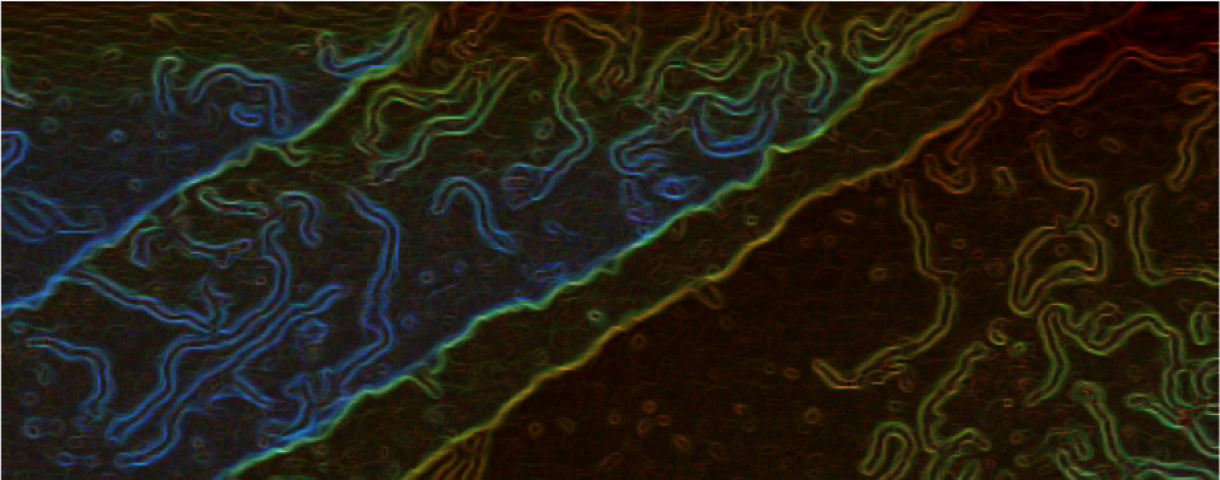Moiré-Induced Enhanced Hydrogen Adsorption on Graphene
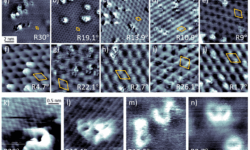
Tailoring the adsorption properties of 2D materials for targeted chemical processes is a central challenge in surface science. In particular, modulating hydrogen binding on graphene has strong relevance for catalysis and energy applications. In this study, we investigate hydrogen chemisorption across ten distinct moiré superstructures formed by graphene on various…
On-surface synthesis of metal-organic oligomers from photoactive BOPHY molecules and native adatoms
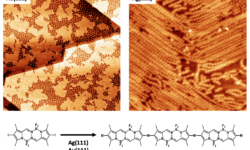
Synthesizing new low-dimensional materials with tailored functionalities for specific applications remains a major challenge in the field of on-surface synthesis. Among these materials, polymers incorporating photoactive moieties stand out as promising candidates for photocatalytic applications, given the exceptional photocatalytic activity exhibited by their bulk counterparts. In this work, following an…
Concavity vs convexity: what is the role of molecular configuration on the reaction pathway?

The role of stereochemistry—the spatial arrangement of atoms within molecules—on the reaction pathway has been largely overlooked in on-surface synthesis despite being crucial in organic chemistry. In this work, we demonstrate how the starting diastereomeric configuration can drive the surface-induced transformation of a substituted cyclooctatetraene (COT) structure—a key molecule in…
New TERS with nanometer spatial resolution in ESISNA
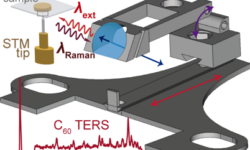
We have designed and upgraded a scanning probe microscope (SPM) to allocate the required internal optical setup required to perform atomic-scale spectromicroscopy. This system is the first operational SPM-TERS in Spain capable of working under cryogenic and ultra-high vacuum (UHV) conditions with nanometre resolution. Unlike previous versions that rely on…
Design and Synthesis of a 2D Cu-Coordinated Carbon Nitride Network: A Promising Single-Atom Catalyst for Environmental Applications

Metal-coordinated networks are promising catalysts for environmental applications like green hydrogen production and pollutant photo-degradation. While traditionally 3D, recent efforts have extended these networks to 2D, though synthesis and stability remain challenging. Using a bottom-up approach, we successfully designed and synthesized a 2D hexagonal carbon nitride Cu-coordinated network by combining…
Gas-Phase Synthesis of n-Alkanes in Circumstellar Environments

Aliphatics are prevalent in various solar system bodies and the interstellar medium, with linear alkanes (n-CnH2n+2) detected in carbonaceous chondrites in small amounts. Despite their consistent presence, their formation mechanism in meteorites remains unclear. This study proposes a gas-phase synthesis mechanism for n-alkanes from carbon and hydrogen under conditions similar…
Front cover in ACS Catalysis

This study investigates sulfite ion electrooxidation in an alkaline environment using cyclic voltammetry on copper oxide electrodes with different oxidation states (Cu(I) and Cu(II)) and similar active areas. Nanostructured Cu films made of nanoparticles or nanorods were synthesized on glassy carbon electrodes. The findings reveal that Cu(I) electrodes demonstrate higher…
UV-Induced Mechanism of Aliphatic Cleavage in the Interstellar Medium
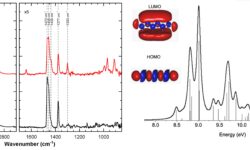
In the interstellar medium (ISM), UV processing leads to significant chemical transformations in hydrocarbons. Aliphatic hydrocarbons such as alkanes, commonly formed in evolved stars, undergo dehydrogenation primarily through UV-induced photocleavage of C–C bonds rather than direct hydrogen elimination. This study combines experimental data and ab initio calculations to understand how…
Front cover in ACS Applied Energy Materials

One of the primary challenges associated with the use of titanium dioxide as a photocatalyst lies in its wide bandgap. In our research, we addressed this issue by employing a thermal treatment in atomic hydrogen plasma to reduce TiO2. This process led to an enhancement in the material’s light absorption…
Electron-stimulated desorption kinetics of ultra-thin LiCl films on graphene
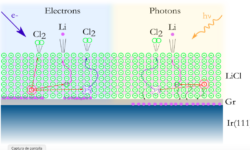
Although ultra-thin alkali halide films are widely employed substrates due to their insulating behavior, their structural stability upon electron and photon beam exposure is not fully understood. In this study, we focus on the evolution of the LiCl thin film structure on graphene through low-energy electron irradiation. We observe desorption…






